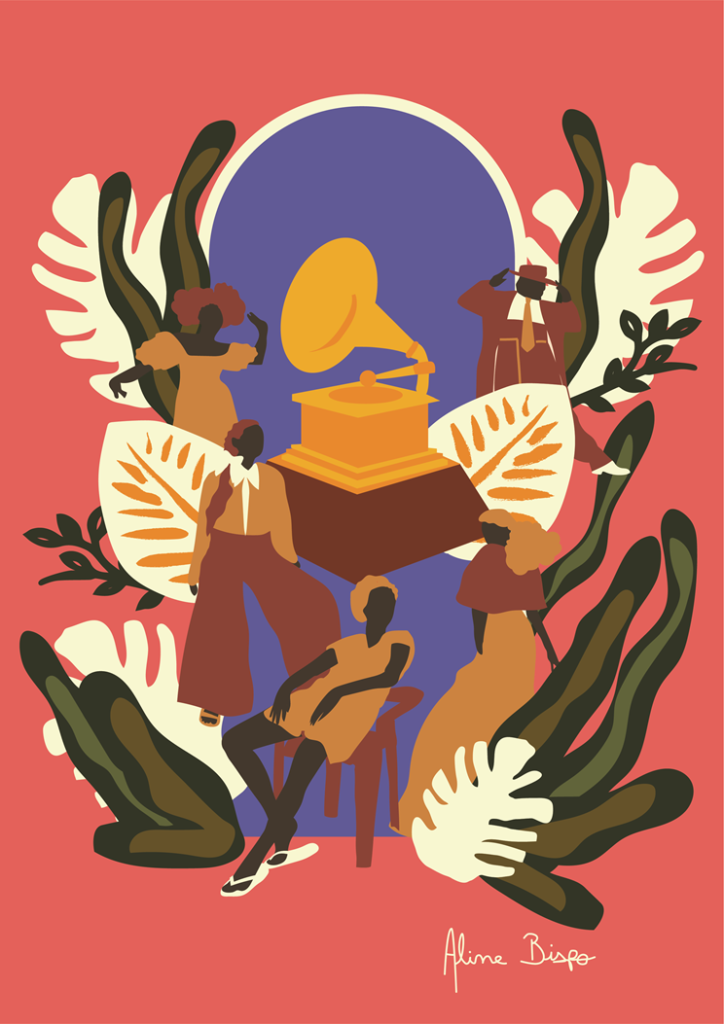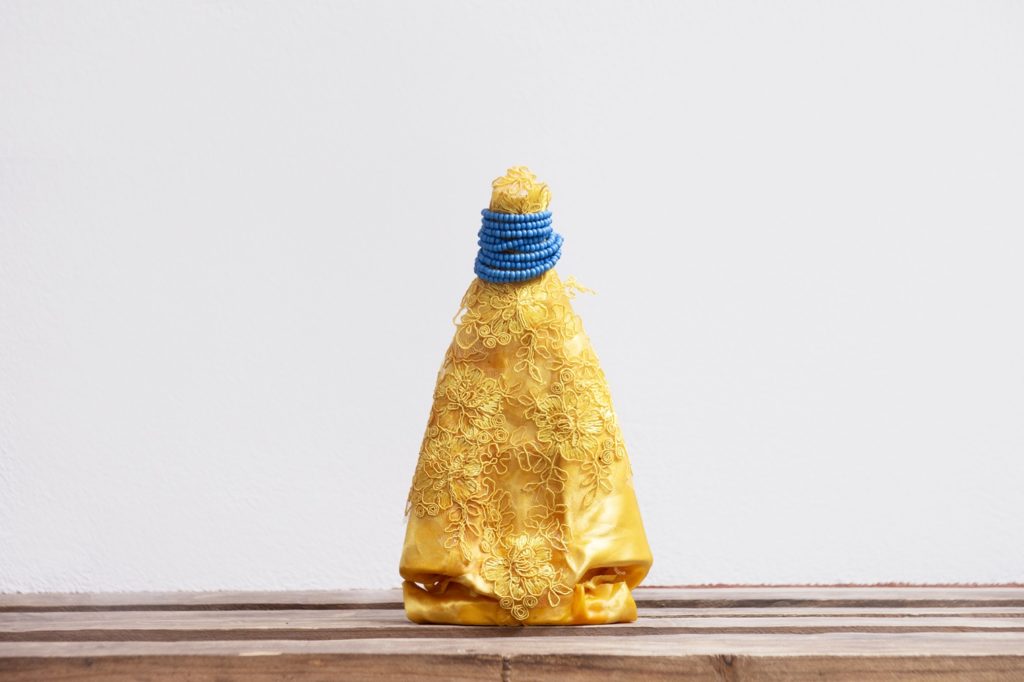Share the post "From the suburbs of São Paulo to the Latin GRAMMY stage. Interview with visual artist Aline Bispo"
Tell us what you do and your beginnings.
I am a multi visual artist and more recently I have been carrying out some work as an independent curator. My work involves languages ranging from painting on canvas, on buildings, through urban interventions, and creating prints for various uses in the world of fashion, book covers, performance, and photographic studies.
Last year I started my research with the development of sculptures and objects for installation. My path as a visual artist began from concerns that were born before I thought about taking them to artistic work.
Before talking about this, it is important to say that I was a child, I always drew and I followed my mother sewing at home during my childhood, so she sewed and I made clothes for my dolls and I was a little fascinated by the old magazines that my mother used. They had fashion, lifestyle, architecture, and decoration content, all of which were incredible to me and enriched my artistic production.

But I lived in a part of the outskirts of the city of São Paulo and as I grew older I began to observe social and ethnic differences, especially when I needed to move around the city to work and study, this was the first moment, around 2008, that I spent looking at myself seeking a greater purpose than just living following some imposed rhythms.
It was at this moment that I started to observe myself and look at my physical characteristics, since in Brazil racial issues are difficult to the same extent that it is believed that there is a racial democracy, I started to look at the history of my family and what I call it a ‘non-place’ which is where my mixed-race body finds itself in my country.
These were the motivating factors for me to take the first step, look at myself in the world in a different way, find out what the world thought about it and, of course, which stories were similar to mine.
It was when I went to study interior design, at the same time I did small graffiti around the city and these two practices encouraged me to follow my later training and to continue making art in other ways.

What does your work aim to say?
Today this creation of art, which began with this look at this mixed-race body in the world, brings other stories. In my search for what I call ‘non-place’, I came to understand the stories of my country, its people, and consequently how these stories connect to Afro-diasporic peoples and Afro-diasporic stories, but also connect to the people indigenous and Latino people from different parts of the world.
Continue on MuseumWeek magazine.
